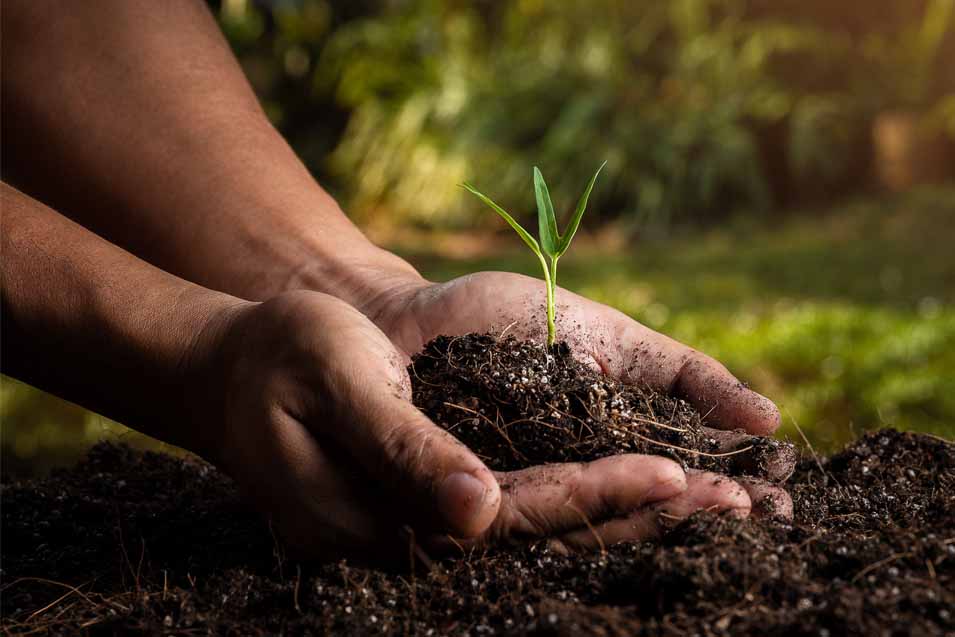
The demand for sustainable farming and agriculture is rising amid growing concerns over the climate crisis and the personal impact of being able to harvest your crops is rewarding. Plus, producing a profitable business from your land is something you can pass down through generations – giving your family ultimate security.
While the benefits are apparent, you are here because you want to bring this vision to life. This business is not easy to start and maintain, but you can be successful if you put your mind to it and carefully follow each of the steps in this article.
Set Your Goals and Follow Through
One of the most significant mistakes that new business owners make is not setting manageable goals. To turn your dreams into reality, you have to break down your overarching goal into bite-sized steps. The most effective method is the Tiny Habits method by BJ Fogg. By breaking down your vision, you’ll be able to see how everything fits together into the bigger picture. Then, you’ll be able to track your progress and set an accurate timeline for crop production.
Visit Other Farms
The sustainable agriculture community is significant, and other farmers that are concerned with green farming processes are generally more than happy to give you advice. For starters, you’ll want to visit people who live in the same area and have similar land to yours. Being able to get an accurate visual of what you’re in for will better prepare you for the road ahead. Since networking is an essential part of business, it’s necessary to make connections to establish yourself in the space. Plus, other farmers might refer you to vendors when they can not supply all of the requested products.
Write a Business Plan
A business plan is necessary for any niche, as it will help you assess risks and possible issues that may stand in the way of production. It’ll help you map out each step you need to take to get your business up and running. In addition, it gives investors a clear visual of your path to success and proves that you know what you’re doing. Therefore, they can be confident in seeing a return. You have to be honest about your current financial situation to request accurate funding. If you lie on your business plan, you risk failing and being held liable for the losses of your investors.
Write a Production Plan
A production plan details how you will viably produce specific crops for your potential vendors. This part is essential for seeing what your land can do for you and if you’ll need to rent nearby to maximize your capabilities. You need to consider several things when creating your production plan, though. For instance, what is the climate like in your area? Consider the soil health and how much crop you will need to produce to make a profit. Additionally, this is where you’ll measure how much you and your family can take on and whether you’ll need to hire help.
Gather Equipment
If you’re serious about starting a sustainable agriculture business, you’re going to need the proper equipment. Aside from the basic tractors, combines, pest prevention, and watering installations, you need to make sure you’re comfortable on the job. Protective gear is often overlooked in the beginning since you’re more focused on your crops than yourself. For example, many farmers purchase an ATV to navigate the land between tasks quickly. Additionally, with long days in the sun, you will want to look into attachments for your tractor that will protect you from the sun’s harmful UV rays – such as a Kubota tractor canopy.
Track Your Progress
New farmers often overlook tracking progress but skipping this can lead to costly mistakes. You must track your progress every day, especially in the first few years of business. After that, you’ll be able to assess and learn from your mistakes. Additionally, by monitoring all aspects of business, you can accurately plan for the years ahead. For example, if you didn’t do so well with one crop but did better with another, you’ll know to adjust your production for each subsequent year.
In addition to learning from your hardships, when you journal your progress, you can create a resource that future generations will use to avoid making the same mistakes.
Even though this may seem overwhelming, starting a sustainable agriculture business should be exciting. Once you set your goals, you can write business and production plans. These items will help you map out every step you need to take for your business to thrive.
Furthermore, make sure you seek the help of seasoned professionals who can give you advice and help you network within the agriculture community. After all, you won’t be able to do this alone. But, with the right equipment, help, and know-how, you’re already paving the road to a successful agricultural business.





